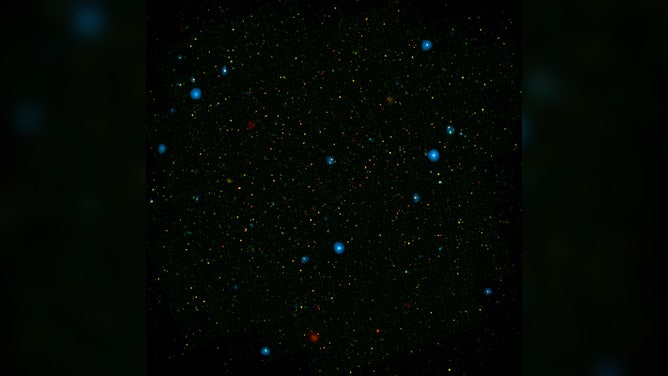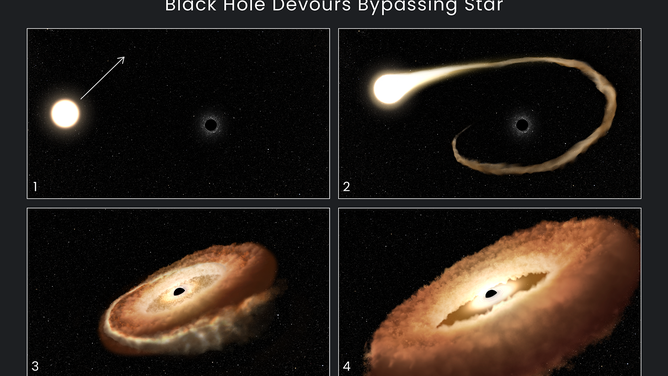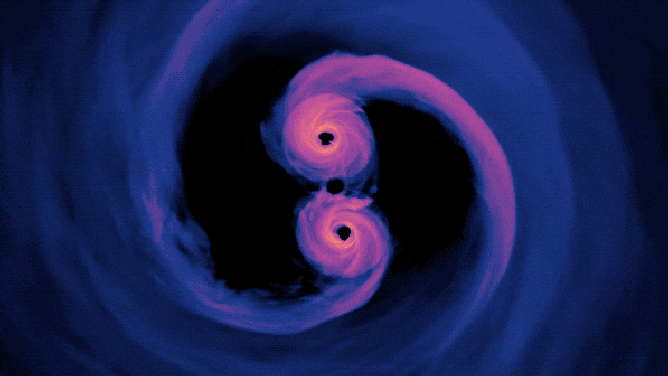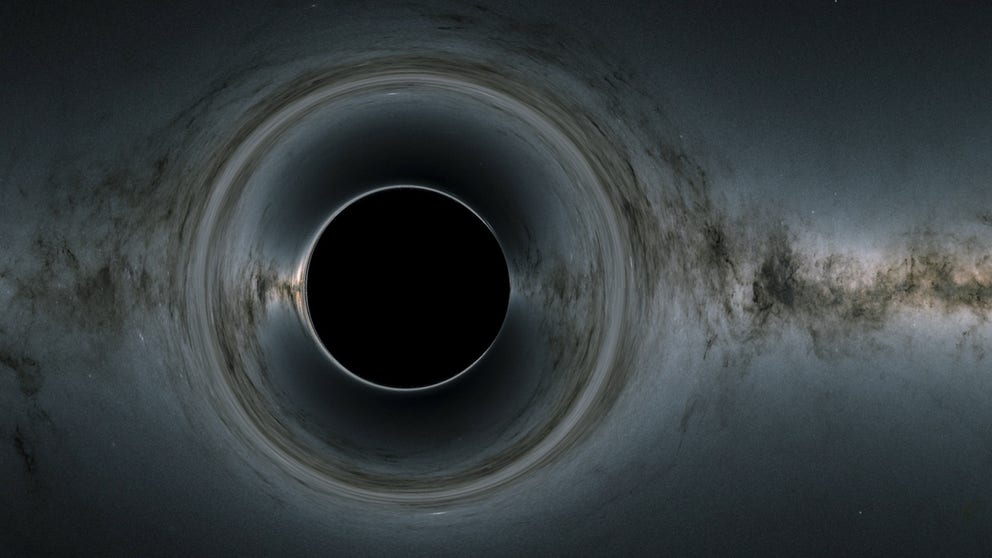What is a black hole? Here's why these enigmas of space don’t suck
Black holes are among the most misunderstood forces in the universe. Here is what astronomers do know about the cosmic objects.
What is a black hole? Explaining the universe's most mysterious cosmic object
Much studied but not fully understood, black holes are among the most mysterious cosmic objects in our universe.
Black holes are commonly used in science fiction and can have a negative connotation, but what you think you know about these misunderstood forces is probably all wrong.
Varoujan Gorjian is a research astronomer with NASA's Jet Propulsion Laboratory at Caltech, who studies black holes and, more specifically, what happens around them.
Gorjian said there are very few people considered black-hole scientists, for which Stephen Hawking was famous.
"Most of us that deal with black holes are the ones who are studying how they basically are affecting their environment and how they are accreting, whether it's a stellar mass black hole that has a companion of gases coming from it, or there's a supermassive black hole at the center of our galaxy and gas is falling into it," Gorjian said.
To explain why black holes remain such an enigma Gorjian helps FOX Weather explain the science around these exotic objects.
What is a black hole?

The blue dots in this field of galaxies, known as the COSMOS field, show galaxies that contain supermassive black holes emitting high-energy X-rays. The black holes were detected by NASA's Nuclear Spectroscopic Array, or NuSTAR, which spotted 32 such black holes in this field and has observed hundreds across the whole sky. (Image: NASA JPL/Caltech)
(NASA)
A black hole is a huge amount of mass in a very tiny volume. The black hole name comes from the area just beneath the surface known as the event horizon, where nothing can escape – even light. This vast blackness contains all the matter of the black hole.
If you need to know one thing about black holes, Gorjian said, it's that "black holes don't suck."
"The idea of black holes sucking everything into them was definitely something I heard as a kid, and that's just wrong," Gorjian said.
MEET SAGITTARIUS A*: SCIENTISTS SNAP FIRST PICTURE OF SUPERMASSIVE BLACK HOLE AT CENTER OF MILKY WAY
While black holes don't eat up everything in their orbit, objects do fall into black holes if the circumstances are right.
"Unless you are headed directly at it … you're most likely just going to be swung by and just sort of flung out," Gorjian said. "For something to actually physically fall into it, it needs to lose its sort of momentum. That's why stars of the centers of the galaxies aren't just all falling into the black hole at the center. They're all just orbiting it."

This sequence of artist's illustrations shows how a black hole can devour a bypassing star. (Credits: NASA, ESA, Leah Hustak (STScI))
(NASA)
If a star gets close enough and stellar gas begins flowing around the black hole, then there is friction between the two.
"Then you start losing energy, and the orbit becomes tighter and tighter and tighter and eventually falls," Gorjian said.
These events are known as tidal disruptions. Hubble Space Telescope observations were recently used to show a supermassive black hole gobbling up a bypassing star.
What are the different kinds of black holes?

Gas glows brightly in this computer simulation of supermassive black holes only 40 orbits from merging. Models like this may eventually help scientists pinpoint real examples of these powerful binary systems. (Credit: NASA’s Goddard Space Flight Center/Scott Noble)
(NASA)
Different types of black holes can be defined by their mass.
Astronomers use our sun's mass as a measurement for huge things in the universe, such as black holes.
According to NASA, the mass of a black hole is usually called a "solar mass." One solar mass is defined as the mass of our sun.
Stellar black holes
Stellar black holes start out at three times the mass of the sun and then increase in mass.
Gorjian said most stellar black holes are usually the remnants of exploding stars or supernovae. When a star is so massive, its core cannot produce enough energy anymore to resist all the mass, and it begins collapsing.
"Much more massive stars, when they explode, their cores actually collapse and become a black hole," Gorjian said.
Supermassive black holes
Most, if not all, galaxies have a supermassive black hole at the center. Gorjian said this wasn't fully understood until about 25 years ago, thanks to observations from Hubble Space Telescope and ground-based telescopes in Hawaii.
"There's no way at the time with the instrumentation that we had to tell that there were supermassive black holes at the centers of most galaxies unless they were active, and active galaxies are only about 10% of the population," he said.
How supermassive black holes begin forming is still unknown, but it's believed they formed in the first billion years of the universe.
One thing that is clear is how supermassive black holes grow -- through galaxy mergers or feeding off smaller objects like neutron stars.
"We do know that galaxies merge and when galaxies merge, they're supermassive black holes or, maybe, weren't supermassive, but pretty massive, and they merge and become supermassive," Gorjian said.
Intermediate mass black holes
The third category of black holes is really a theory, not a defined type. Intermediate mass black holes are believed to be in between the weight of a stellar and supermassive black hole.
"We have no current detection, but we have no reason to expect that they shouldn't exist," Gorjian said. "But if we don't find them, then at some point it's like, ‘Why is it that we just sort of separate out into these two larger categories?’ But it could be just we just haven't found the right way of finding them."
Why the first sounds and images of black holes were historic

This is the first image of Sagittarius A*, the supermassive black hole at the centre of our galaxy. It was captured by the Event Horizon Telescope (EHT), an array which linked together eight existing radio observatories across the planet to form a single "Earth-sized" virtual telescope. (Credit: EHT Collaboration)
Our galaxy, the Milky Way has a black hole called Sagittarius A* (pronounced ey-star), which is 4 million times the sun’s mass. Scientists used the Event Horizon Telescope last year to capture the first image of Sagittarius A*.
Now you're probably wondering if no light can escape, how can telescopes and cameras "see" a black hole? According to NASA, scientists can find black holes by looking for evidence of their surroundings, including a hot disk of gas that emits UV and X-ray radiation known as an accretion disk.
It's also possible to find black holes by looking at the influence they have on star orbits.
The first-ever image of a black hole was also captured by the Event Horizon Telescope in 2019 of a supermassive black hole (M87*) at the center of a distant galaxy called Messier 87, which finally revealed what Albert Einstein had predicted.
Prior to these images, evidence of black holes was mainly circumstantial.
"An image is no longer circumstantial evidence," Gorjian said.
With M87*, for years, observations showed jets coming off of it, but it couldn't be proven a black hole was what was generating a magnetic field.
LISTEN TO THE HAUNTING SOUNDS OF A BLACK HOLE
"The image was like, 'Okay, here is the image. Here's where the gases emitting light, and here's where you're getting zero light. Does that match with the mass of the black hole?" Gorjian said.
The more massive a black hole is, the larger the event horizon is, or the radius of the black hole from which light cannot escape.
The image of M87* was "spot on" Gorjian said, matching the estimated mass.
Another way scientists have proven black holes exist is by listening for the gravitational waves they create when merging, which are ripples of space-time.
Albert Einstein predicted these ripples in space-time in 1916 with his theory of general relativity, but it wasn't until 2015 that an international team was able to detect these waves.
"If space-time is like a fabric like Einstein predicted, then it also predicted that these motions of things as they're spiraling and should create waves," Gorjian said. "And we created detectors for those (waves). Because it's not light, it's fundamentally the change in space flowing out."
The first gravitational wave detection by the Laser Interferometer Gravitational-wave Observatory or LIGO in 2015 earned a Nobel Prize.
Celestial events create gravitational waves all the time, but usually, they are too tiny to detect.
"It's this extreme situation of black holes merging that creates big enough waves to travel far enough so that we can actually get those waves, detect those waves, and then, well, it's a wave," Gorjian said. "What would that wave be like if it was traveling through air in the way that we hear sounds?"
The result is the blip you hear above.
More mysteries of black holes

In this illustration, light from a smaller black hole (left) curves around a larger black hole and forms an almost-mirror image on the other side. The gravity of a black hole can warp the fabric of space itself, such that light passing close to the black hole will follow a curved path around it. (Image Credits: Caltech-IPAC)
(NASA)
There are still many questions about black holes that remain unanswered.
At the top of the list is where supermassive black holes come from.
"This is sort of linked to the entire origin of the universe … are they the seeds around which galaxies form?" Gorjian said.
Astronomers are hopeful the powerful James Webb Space Telescope could help solve some of these mysteries. As JWST looks out into the early universe, it could find the connection between black holes and their galaxies.
Outside more telescope observations, Gorjian said additional theoretical work is needed about the transition from the event horizon to where no light can escape.
While black holes were only recently definitely seen and heard, Gorjian said theories about black holes are not just "wild guesses."
"This is the product of the work of theoreticians, observers, engineers, all the people who went together to put all of the instruments together so we can observe them to get an interpretation of them," he said.
